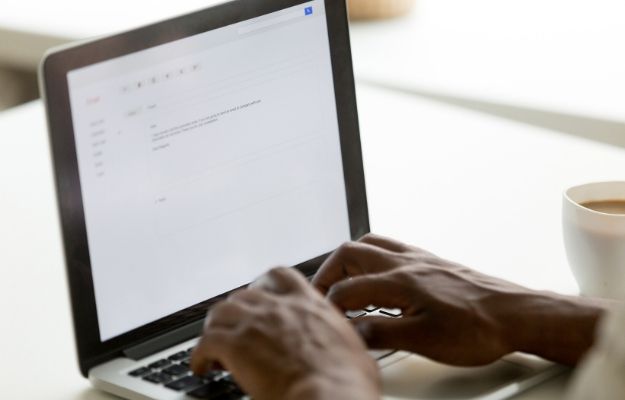Email Response Etiquette: 8 Mistakes To Avoid
There is no doubt that emails are a great tool in the B2B sales industry, particularly when marketing and prospecting. However, it’s easy to make numerous mistakes that can make your email response look unprofessional and spam-like. Here are some common mistakes about email response and how to avoid them.
RELATED: THE ULTIMATE LIST OF FOLLOW UP EMAIL SUBJECT LINE EXAMPLES
In this article:
- Unclear Subject Line
- Poor Spelling and Grammar
- Not Using the Recipients Name
- Not Using Greetings and Closings
- Not Responding in a Timely Manner
- Not Thinking Before Forwarding
- Using Wacky Fonts and Formatting
- Using the Wrong Recipient Name
Email Response Tips
Email prospecting is best when you want to reach a lot of people for lead generation. Of course, you have to make sure that the email isn’t an end in itself.
Simple goals can also be achieved with an email: scheduling a meeting, answering one-off questions, and more.
But ultimately, when you’re communicating through email, it’s to get customers to talk to you and purchase your product, so email response is key to building that relationship and closing deals.
We’re only human, and blunders happen, but follow the below email etiquette tips to avoid any email response mistakes.
Unclear Subject Line
Getting people to click on your emails is key to increasing sales conversion rates. Catching your customer’s attention is half the battle, so the email subject line. However, a seemingly minor amount of work could be the difference between starting a great client relationship or saying goodbye to that person forever.
A clear subject line is crucial, so recipients understand why they’re making contact before they open the email. Most people scan their inbox for standout email subject lines, mainly via a mobile device, so a clever salesperson knows how to write clear subject lines that are catchy, customer-centric, use CTAs, and are personalized.
Subject lines must be informative, concise, and clear. Mastering this skill might take time, but getting the email open and responding to it’s essential.
Particularly when connecting with C-level executives, quite possibly because of time restrictions, they know how to communicate efficiently. Therefore, you’ll need to get to the point and respectfully not waste their precious time.
Poor Spelling and Grammar

We’re all accustomed to using shorthand and abbreviations when messaging colleagues, but it’s a different kettle of fish when speaking with customers, and not an appropriate format. You’ll likely not get taken seriously and present yourself as unprofessional and possibly even unintelligent.
Always check your spelling, punctuation, and grammar, even when using spell-check and grammar tools. Always proofread your writing before you send it, and if unsure, get a colleague to read over what you’ve done.
Not Using the Recipients Name
Not addressing the recipient by name is likely to get you nowhere, especially when prospecting. Take the time to personalize emails to show you respect that person and want to build a relationship.
Not Using Greetings and Closings
Even though you’re responding to an email, never go straight into a conversation. Greetings and closings are compulsory and shouldn’t be left out from any emails you send. Greetings don’t always have to be Dear [customer name], they can be less formal once the relationship is established.
Creating an email signature is a useful shortcut that also respects email etiquette. Include your name, job title, company name, and contact information at the very least.
Concluding in an appropriate way allows the recipient to have a better understanding of who you are and leaves a good impression.
Not Responding in a Timely Manner

You should always respond to your important emails within 24 hours. Even if you cannot respond fully, it is recommended to reply, respectfully showing that you received the email. Adding in a get-back-to-you date is a great way to manage customer expectations.
If you’re out of the office for more than 24 hours, you must use an out of office autoresponder. Some salespeople do this even while in daily meetings so that customers know they are important to them. Providing details of who to contact in your absence will make you look more professional.
Additionally, never respond to an email immediately, no matter how big the client is and how excited you are. Take time to digest the content and reply with a great email response.
Not Thinking Before Forwarding
You’ve possibly done this at least once in your career. Forwarding an email about someone, to them or sending sensitive information to the wrong person! It’s heart-stopping stuff and lacks all professionalism.
Using Wacky Fonts and Formatting
Using colors, emojis, and offbeat formatting might be appropriate for some businesses, but generally, it’s likely to hurt your recipient’s eyes and come across as unprofessional. Using bold or capital letters for more than a few words also goes against standard etiquette.
Using the Wrong Recipient Name
Always triple check you have the correct name, particularly when forwarding messages – using the name of the person who sent you an email sounds like a no brainer, but mistakes can be made in multiple-people emails. Mis-spelling is also crucial; check their signature as email addresses can be misconstrued. Only shorten names if that’s how your customer addresses themselves.
The quality of your email response will often determine if a client will purchase your product or hire your services. All responses should be professional and well thought out.
What other email response tips do you have? Do you have any funny stories about emailing incorrectly? Share your comments in the section below.
Up Next:
